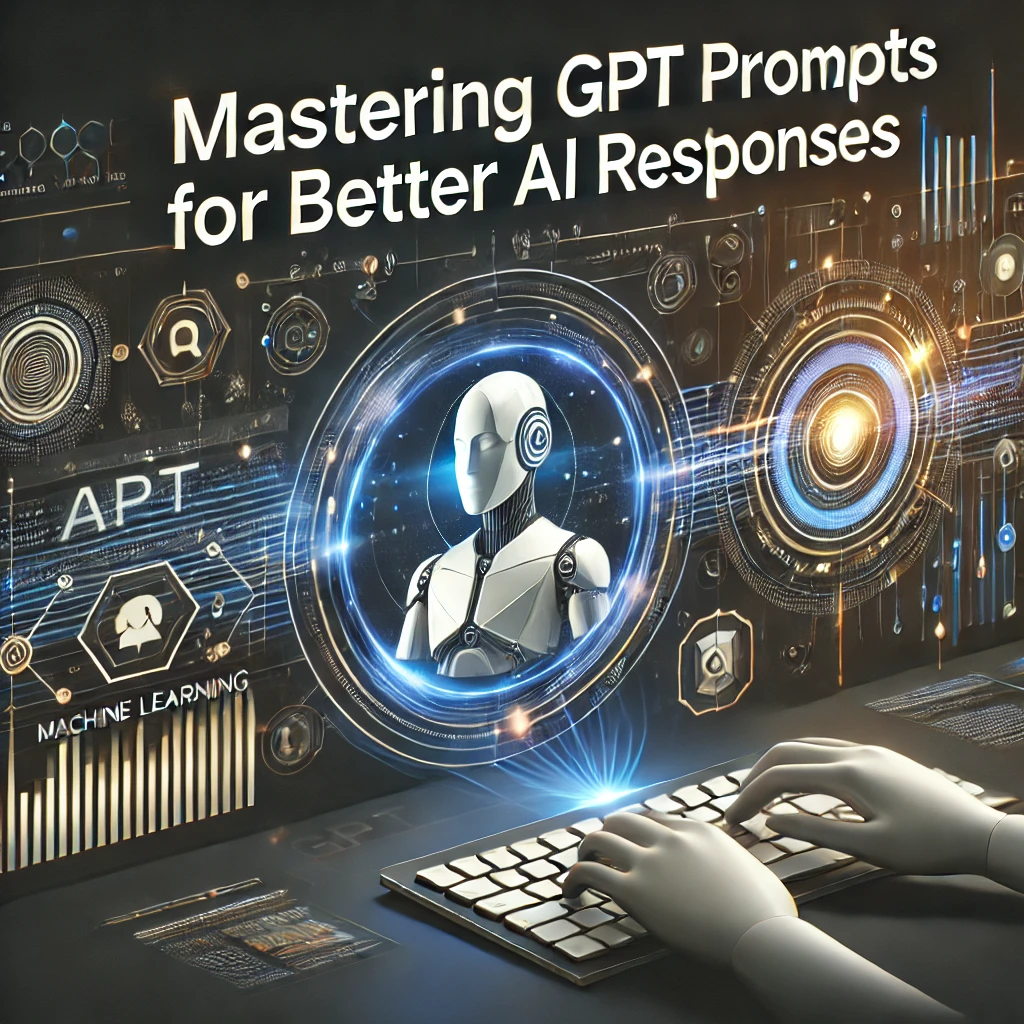The quality of responses from AI systems like GPT largely depends on the way you frame your prompts. Writing effective prompts is both an art and a science, and mastering it can significantly enhance the value you derive from these systems. Whether you’re using GPT for content creation, programming assistance, brainstorming, or casual conversations, a well-crafted prompt can make the difference between a vague, generic response and a highly relevant, detailed one. In this guide, we’ll explore the key principles of prompt engineering and share advanced techniques to help you get better responses from AI.
Understanding How GPT Interprets Prompts
Before diving into tips and tricks, it’s important to understand how GPT processes prompts. GPT is a language model trained on vast amounts of text data. It generates responses by predicting the most likely next words based on the input provided. This means the clarity, context, and specificity of your prompt directly influence the quality of the output.
When crafting a prompt, think of it as a conversation starter. The AI needs enough context to understand your intent and generate a coherent response. The more specific and structured your prompt, the better the response you’ll receive.
1. Be Clear and Specific
The most fundamental rule of writing effective prompts is clarity. Clearly state what you want the AI to do, avoiding ambiguity. For example, instead of asking:
“Tell me about technology.”
Try a more specific version:
“Explain the impact of artificial intelligence on healthcare in a detailed manner.”
By specifying the topic and the level of detail, you guide the AI to produce a more relevant response.
2. Provide Context
Context helps the AI understand the purpose of your query. For example, if you’re writing a story, provide background details:
“Write a dialogue between a detective and a witness in a noir crime story.”
The AI will generate responses that align with the specified genre and setting. The more contextual information you include, the better the AI can tailor its output.
3. Use Instructions and Examples
Including instructions in your prompt can significantly improve the accuracy of the AI’s response. For instance:
“Summarize the following article in two sentences.”
Adding examples can also clarify your expectations. For example:
“Rewrite the following sentence to make it more engaging. Example: Original: ‘The car is fast.’ Rewrite: ‘The car zooms down the road at lightning speed.’”
Providing examples shows the AI exactly what you’re looking for.
4. Experiment with Prompt Length
The length of your prompt can affect the AI’s response. While short prompts work for straightforward queries, more complex tasks benefit from detailed instructions. For instance:
Short Prompt: “Explain photosynthesis.”
Detailed Prompt: “Explain the process of photosynthesis in plants, focusing on how sunlight, carbon dioxide, and water interact to produce glucose and oxygen. Use simple language suitable for a middle school student.”
The detailed prompt gives the AI more guidance, resulting in a richer response.
5. Leverage the “Role-Playing” Technique
Role-playing can help you set a specific tone or perspective. For example:
“You are a financial advisor. Explain how to invest in stocks for beginners.”
This approach helps the AI align its tone and style with the role you’ve assigned, making the response more relevant and engaging.
6. Break Down Complex Queries
If your query involves multiple steps, break it into smaller parts. For example:
“List the steps to create a business plan. Then, provide a detailed explanation of each step.”
This structured approach ensures the AI addresses each part of your query thoroughly.
7. Use Iterative Refinement
If the initial response isn’t satisfactory, refine your prompt and try again. Iterative refinement involves adjusting the prompt based on the AI’s output. For example, if the response is too generic, add more specificity:
First Prompt: “What are the benefits of exercise?”
Refined Prompt: “What are the benefits of regular aerobic exercise, such as running or cycling, for cardiovascular health?”
This iterative process helps you fine-tune the AI’s output to better match your needs.
8. Experiment with Temperature and Max Tokens
In platforms that allow parameter adjustments, such as OpenAI’s API, you can experiment with settings like temperature and max tokens to influence the AI’s responses. Temperature controls the randomness of the output—lower values (e.g., 0.2) make responses more focused, while higher values (e.g., 0.8) introduce more creativity. Max tokens determine the length of the response, so you can adjust this setting based on the level of detail you need.
9. Combine Multiple Techniques
For complex tasks, combining multiple techniques can yield the best results. For example:
“You are an expert nutritionist. Create a weekly meal plan for someone aiming to lose weight. Include three meals and two snacks per day, focusing on high-protein, low-carb options. Provide calorie estimates for each meal.”
This prompt combines role-playing, clear instructions, and detailed context to ensure a comprehensive response.
10. Stay Ethical and Responsible
When crafting prompts, it’s essential to use AI ethically and responsibly. Avoid prompts that could generate harmful, misleading, or inappropriate content. Always fact-check responses for accuracy, especially when using AI in professional or educational contexts.
Conclusion
Mastering the art of writing effective prompts is key to unlocking the full potential of AI systems like GPT. By applying the tips and tricks outlined in this guide—such as providing context, using examples, and refining prompts iteratively—you can significantly improve the quality and relevance of AI-generated responses. As you gain experience, you’ll discover new ways to tailor prompts to your specific needs, making your interactions with AI more productive and enjoyable. With practice, you’ll become adept at harnessing the power of GPT to enhance your creativity, problem-solving, and overall efficiency.



This is literally the most useful article on the site! Thank you!
Ya! ais rly got better at answerin!👍👍
Exactly what I was looking for, thanks!
Prompt engineering! ✍️🤖 Get better results from AI! Learn to ask the right questions! It’s magic! ✨
i think im starting realize something after all…. 🤔
prompt engineering is it not that hard.. yup!